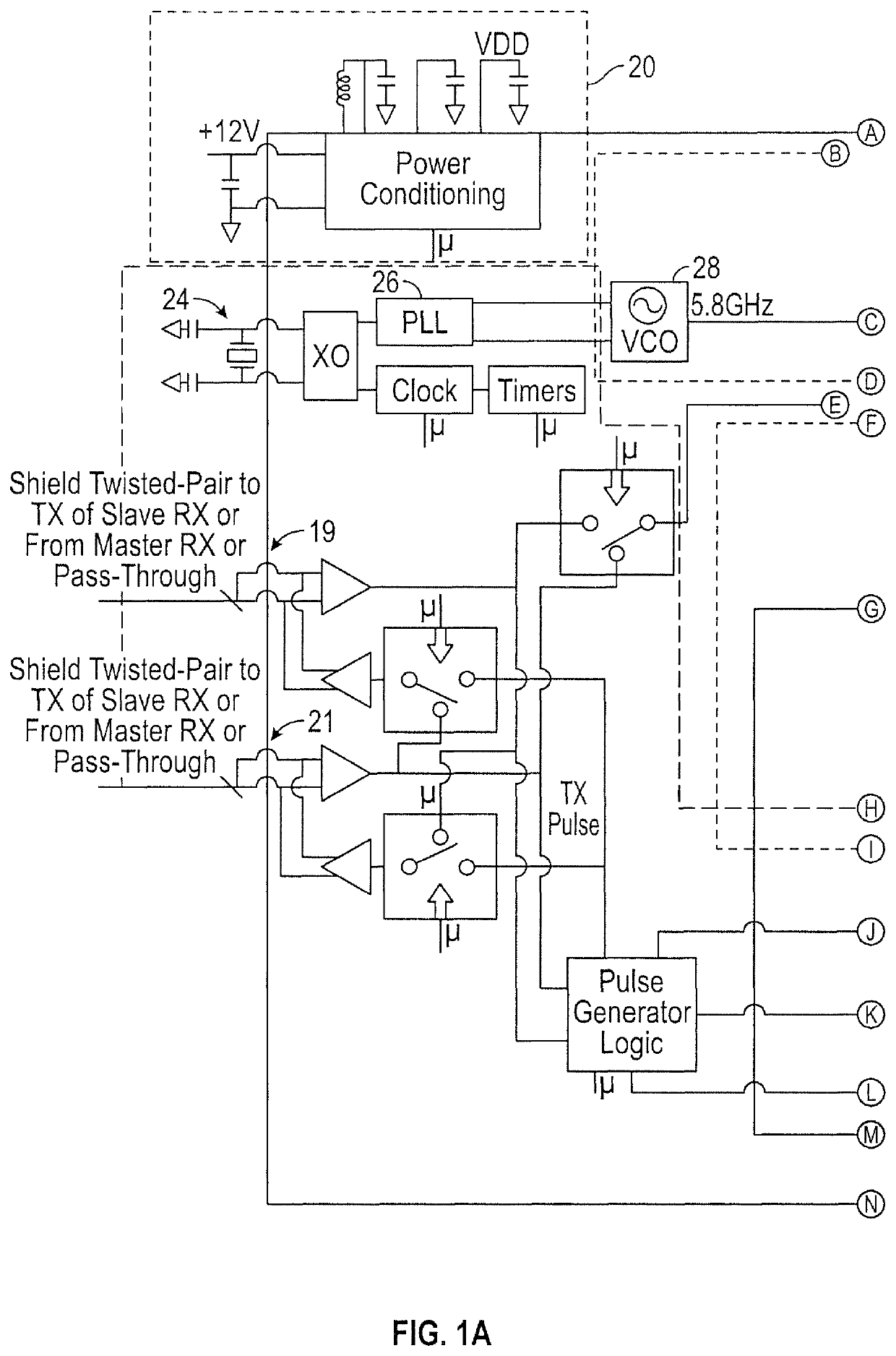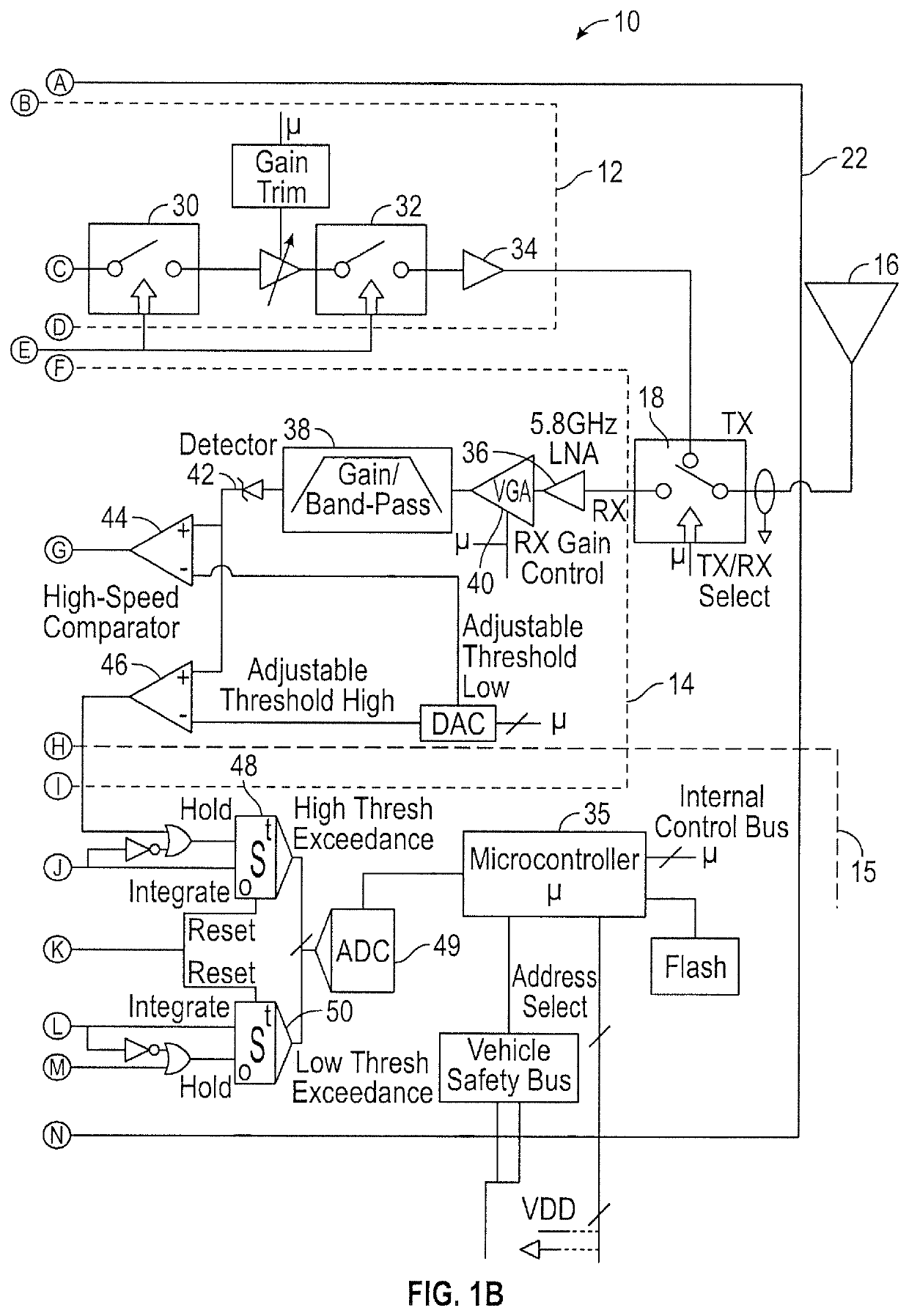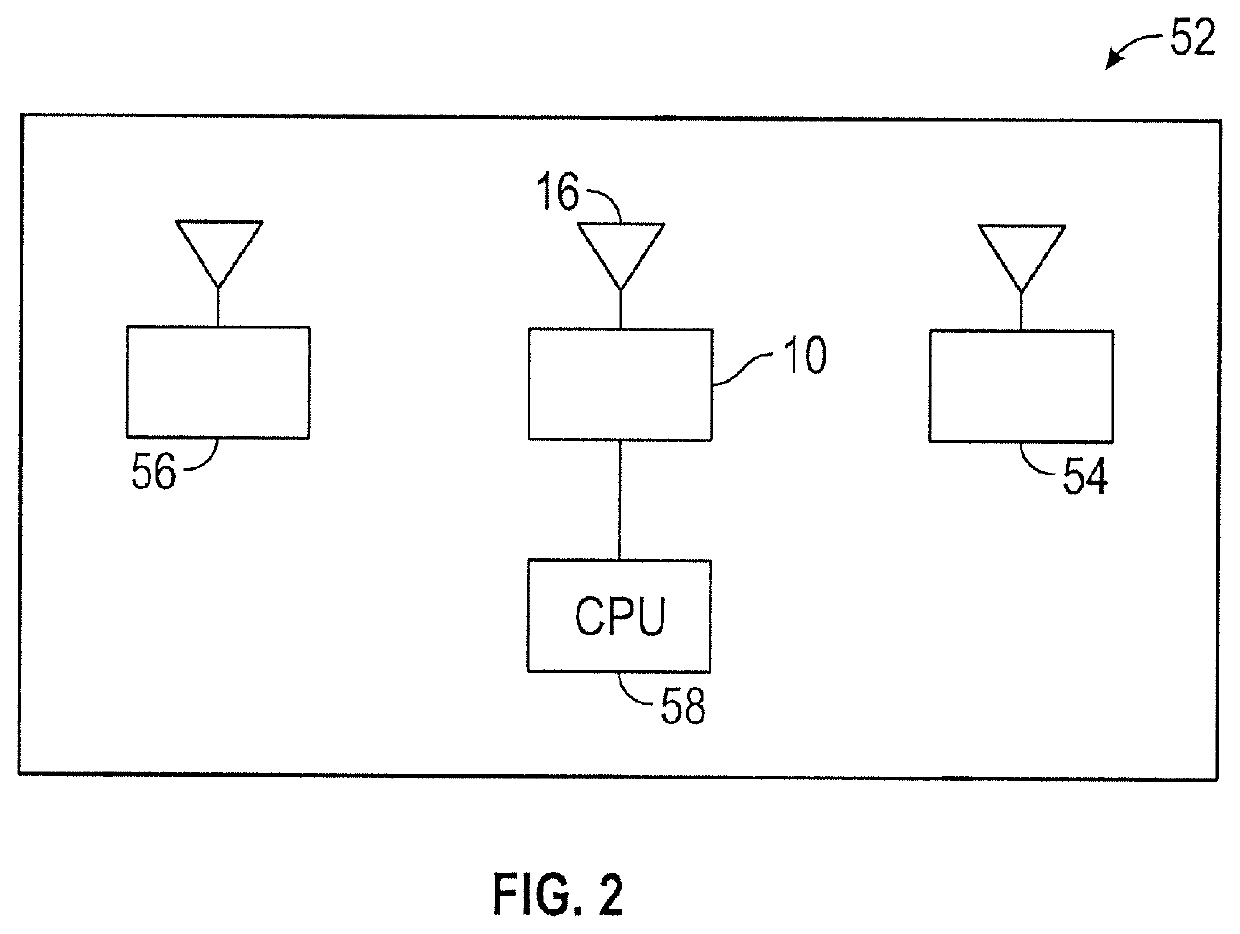Bistatic radar system for motor vehicle applications
a radar system and motor vehicle technology, applied in the field of bistatic radar systems, can solve the problems of inability to accurately estimate the target radar cross-section, inability to accurately inability to detect the target radar, etc., to achieve the effect of reducing cable/wiring costs and improving target radar cross-section estimation
- Summary
- Abstract
- Description
- Claims
- Application Information
AI Technical Summary
Benefits of technology
Problems solved by technology
Method used
Image
Examples
Embodiment Construction
[0022]Shown in FIGS. 1A and 1B are a schematic illustration of a radar module 10 having transmitter circuitry 12, receiver circuitry 14, and a timing and control section 15. Module 10 has an associated antenna 16 that acts as a transmitter antenna for circuitry 12 and as a receiver antenna for circuitry 14, depending on the state of switch 18. Module 10 may include a power conditioning section 20, such as to regulate voltage and improve power quality to enable load equipment to function properly. The term “module” as used herein refers to the combination of a timing and control section 15, transmitter circuitry 12, and receiver circuitry 14 sharing a single antenna 16, and / or to a combination in which the timing and control section 15, transmitter circuitry 12, and receiver circuitry 14 are on the same printed circuit board 22.
[0023]Transmitter circuitry 12 includes a voltage-controlled oscillator (VCO) 28. The VCO is tuned using the timing reference crystal 24 and a phase locked lo...
PUM
 Login to View More
Login to View More Abstract
Description
Claims
Application Information
 Login to View More
Login to View More - R&D
- Intellectual Property
- Life Sciences
- Materials
- Tech Scout
- Unparalleled Data Quality
- Higher Quality Content
- 60% Fewer Hallucinations
Browse by: Latest US Patents, China's latest patents, Technical Efficacy Thesaurus, Application Domain, Technology Topic, Popular Technical Reports.
© 2025 PatSnap. All rights reserved.Legal|Privacy policy|Modern Slavery Act Transparency Statement|Sitemap|About US| Contact US: help@patsnap.com



